*NURSING > QUESTIONS & ANSWERS > Chapter 21--Intraoperative Nursing Management (All)
Chapter 21--Intraoperative Nursing Management
Document Content and Description Below
Chapter 21--Intraoperative Nursing Management MULTIPLE CHOICE 1. A nurse is considering additional training to become a perioperative nurse. Which of the following skills are implemented by the... perioperative nurse? 1. Conducts telephone interviews with the preoperative client 2. Applies principles of aseptic technique 3. Instructs the preoperative client on exercises to use while recovering from surgery 4. Plans for the postoperative client’s discharge to home PTS: 1 DIF: Apply REF: The Role of the Perioperative Nurse 2. Even though the nurse realizes that the ideal time period to plan for postoperative pain management for a pediatric client begins in the operating room, the nurse will begin the assessment process: 1. at the time the decision is made that the client needs surgery. 2. in the family’s home. 3. during the admission process. 4. in the operating room after anesthesia wears off. PTS: 1 DIF: Apply REF: Pain Management in Pediatric Patients 3. The perioperative nurse realizes that the surgical environment is designed to ensure which of the following? 1. Calming effect on the client 2. Ease of use by personnel 3. Control surgical asepsis 4. Reduce postoperative pain PTS: 1 DIF: Analyze REF: The Surgical Environment 4. The scrub nurse is preparing the sterile field by opening an instrument package that was sterilized in an autoclave with direct exposure to steam. This type of sterilization is considered to be: 1. high-pressure/high-temperature steam. 2. cold chemical. 3. dry heat. 4. alcohol. PTS: 1 DIF: Analyze REF: Box 21-5 Sterilization Methods 5. Prior to the surgeon’s making an incision into a client, the client’s skin is bathed with a bacteriostatic solution. The nurse realizes that this solution will: 1. sterilize the client’s skin. 2. disinfect the client’s skin. 3. sanitize the client’s skin. 4. inhibit the number of bacteria on the client’s skin. PTS: 1 DIF: Analyze REF: Table 21-2 Sterilization Terms and Definitions 6. The operating room personnel are applying masks and either goggles or face shields prior to beginning a surgical procedure. The purpose of these items is to: 1. facilitate vision. 2. protect against splashes or sprays of blood. 3. facilitate breathing. 4. facilitate communication. PTS: 1 DIF: Analyze REF: Personal Protective Equipment 7. The nurse is preparing to participate in a surgical procedure and has completed the surgical scrub. Which of the following should the nurse do now in preparation for the surgery? 1. Don a surgical gown. 2. Apply sterile gloves. 3. Adjust the surgical mask. 4. Apply covering over the hair. PTS: 1 DIF: Apply REF: Personal Protective Equipment 8. A client with a suspected degenerative brain disease is having surgery to place an intracerebral shunt. Which of the following should be done with the instruments after this surgical procedure? 1. Sterilize with high-pressure steam. 2. Sterilize with the special treatment to eliminate prions. 3. Wash with bacteriostatic solution and submerge in an appropriate chemical bath. 4. Rinse with disinfectant and place in a gas sterilizer. PTS: 1 DIF: Apply REF: Personal Protective Equipment 9. A client received general anesthesia for a surgical procedure. Which of the following assessments will the nurse complete first for this client? 1. Surgical dressing 2. Intravenous sites 3. Airway 4. Pain PTS: 1 DIF: Apply REF: Box 21-7 Types of Anesthesia 10. The student nurse observing a surgical procedure begins to feel lightheaded and nauseated. Which of the following should the student do at this time? 1. Tell someone she does not feel well. 2. Leave the operating room immediately. 3. Nothing since this feeling will pass. 4. Immediately sit down on the floor. PTS: 1 DIF: Apply REF: Box 21-2 Tips for the Student When Observing in Operating Room 11. A nurse is filling the role of circulator during a surgical procedure. Which of the following will this nurse do to provide care to the client during the case? 1. Maintain the sterile field. 2. Assist the surgeon. 3. Serve as the client advocate. 4. Assist with the administration of anesthesia. PTS: 1 DIF: Apply REF: Circulator/Circulating Nurse 12. An elderly client is scheduled for a surgical procedure. The nurse realizes that the outcome of the client’s operation will depend upon the client’s: 1. age. 2. severity of illnesses. 3. nutritional status. 4. activity status. PTS: 1 DIF: Analyze REF: Geriatric Considerations 13. During a surgical procedure, the client’s body temperature spikes to a dangerous level. Which of the following will be done to help this client? 1. Reduce the flow of the anesthetic agent. 2. Provide 50% oxygen. 3. Stop the surgery for cardiac dysrhythmias. 4. Administer a Dantrolene infusion. PTS: 1 DIF: Apply REF: Malignant Hyperthermia MULTIPLE RESPONSE 1. A perioperative nurse is identified as being the scrub nurse for a surgical procedure. Which of the following is this nurse’s responsibilities during the surgery? (Select all that apply.) 1. Don surgical attire and personal protective equipment. 2. Maintain the sterile field. 3. Pass instruments and supplies to the surgeon. 4. Prepare medication. 5. Remove used instruments. 6. Organize the sterile field for use. PTS: 1 DIF: Apply REF: Box 21-3 Duties of the Scrub Nurse 2. The perioperative nurse is identifying nursing diagnoses appropriate for a client currently having surgery. Which of the following would be appropriate for the client at this time? 1. Risk for infection 2. Risk for impaired skin integrity 3. Risk for injury 4. Risk for inadequate nutrition 5. Risk for hypothermia 6. Risk for fluid volume overload PTS: 1 DIF: Analyze REF: NANDA and the Nursing Process 3. Which of the strategies can a perioperative nurse use to make a child feel less anxious prior to a surgical procedure? (Select all that apply.) 1. Take the client on a tour of the operating room. 2. Allow the client to bring a toy or stuffed animal. 3. Allow the parents to stay with the child as much as possible. 4. Have the chaplain say a prayer with the child. 5. Use age-appropriate explanations. 6. Respond to questions in a straightforward manner. PTS: 1 DIF: Apply REF: Pediatric Considerations 4. The circulating nurse is performing a “time out” prior to the beginning of a surgical procedure. Which of the following will be assessed during this time out? (Select all that apply.) 1. Correct client 2. Correct procedure 3. Correct site and side 4. Correct surgeon 5. Correct day 6. Correct time PTS: 1 DIF: Apply REF: Time Out 5. The nurse determines that a client is experiencing a risk associated with the use of anesthesia for a surgical procedure. Which of the following are considered risks of anesthesia? (Select all that apply.) 1. Nausea and vomiting 2. Sore throat 3. Seizure 4. Postoperative myocardial infarction 5. Surgical wound infection 6. Hypothermia PTS: 1 DIF: Analyze REF: Red Flag: Risks of Anesthesia [Show More]
Last updated: 1 year ago
Preview 1 out of 6 pages

Reviews( 0 )
Document information
Connected school, study & course
About the document
Uploaded On
Jan 28, 2020
Number of pages
6
Written in
Additional information
This document has been written for:
Uploaded
Jan 28, 2020
Downloads
0
Views
43








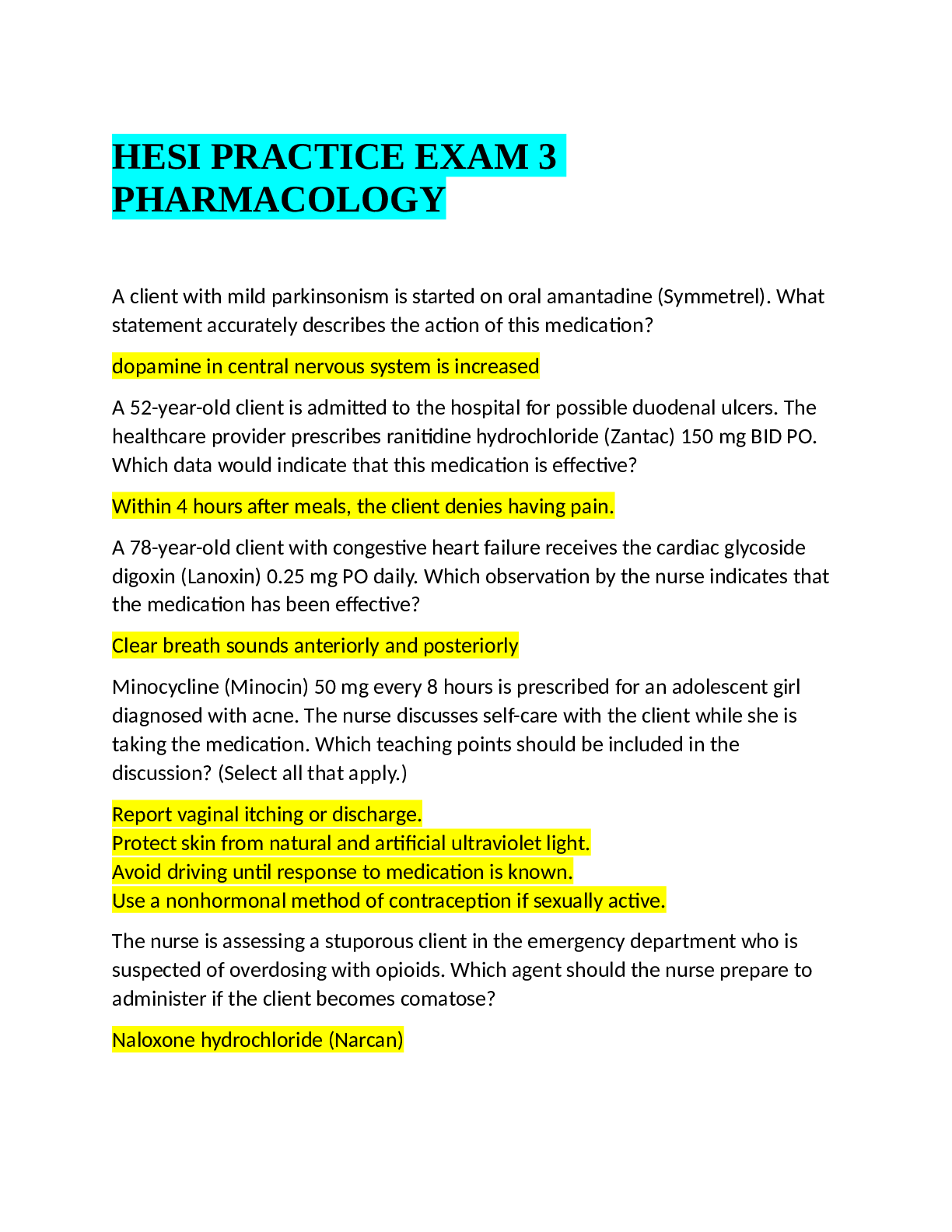




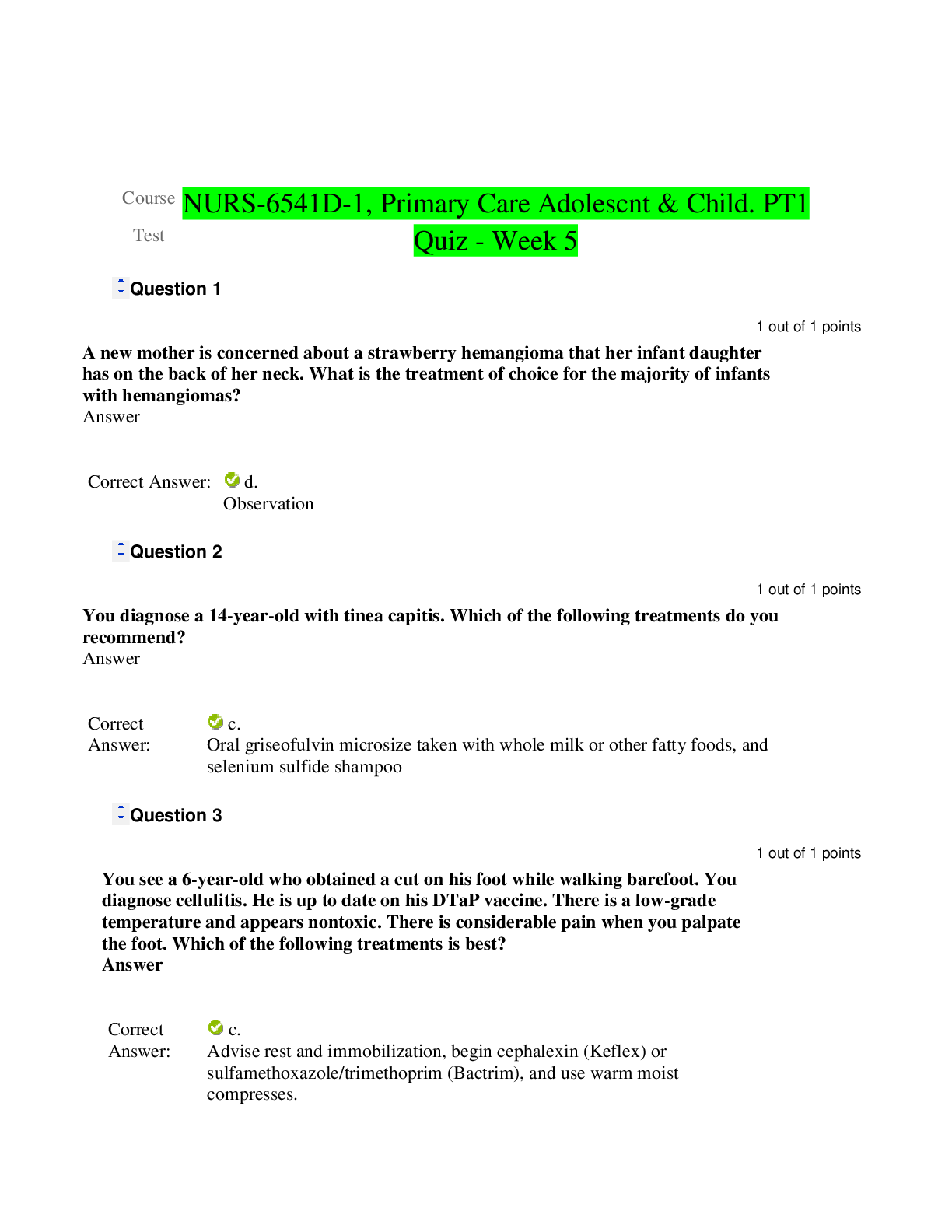
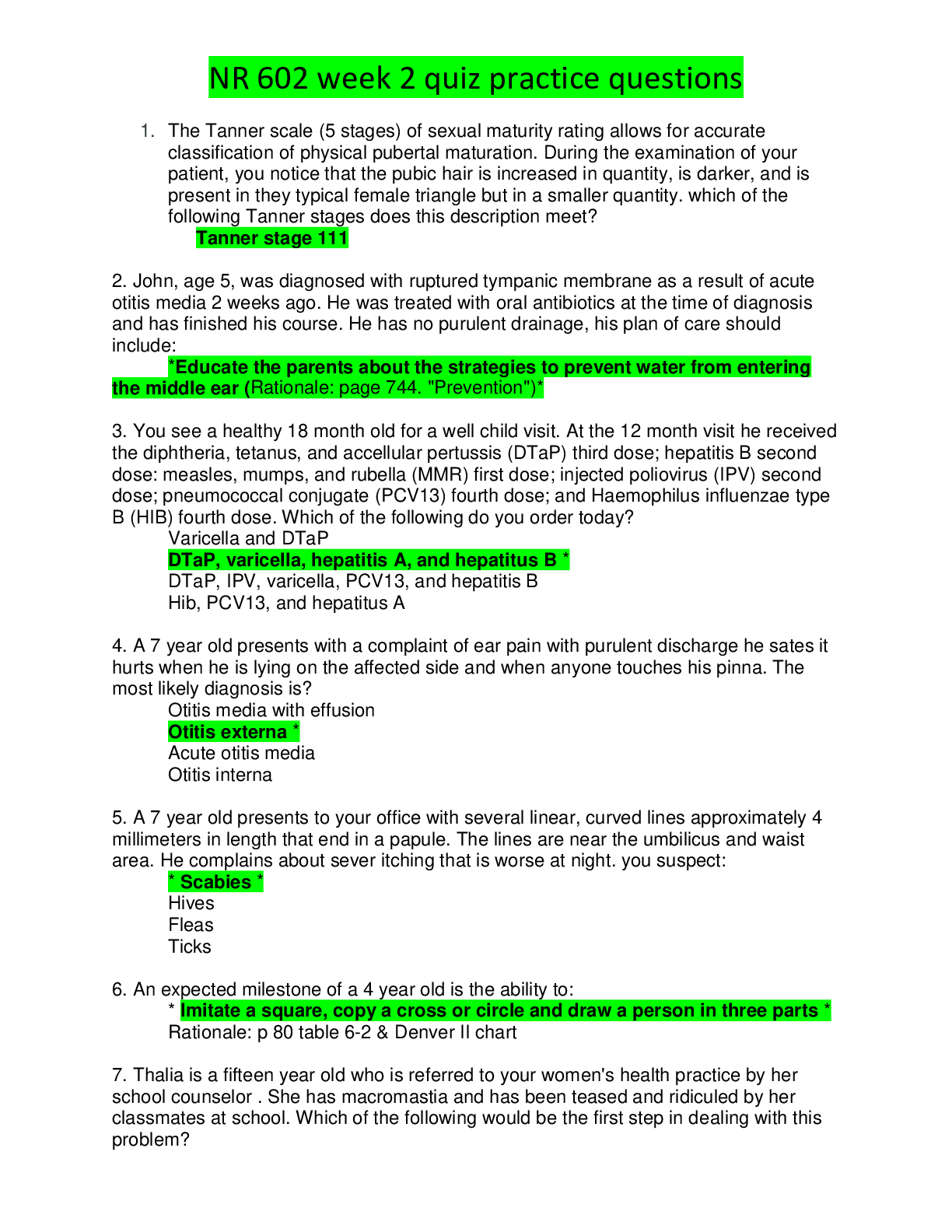
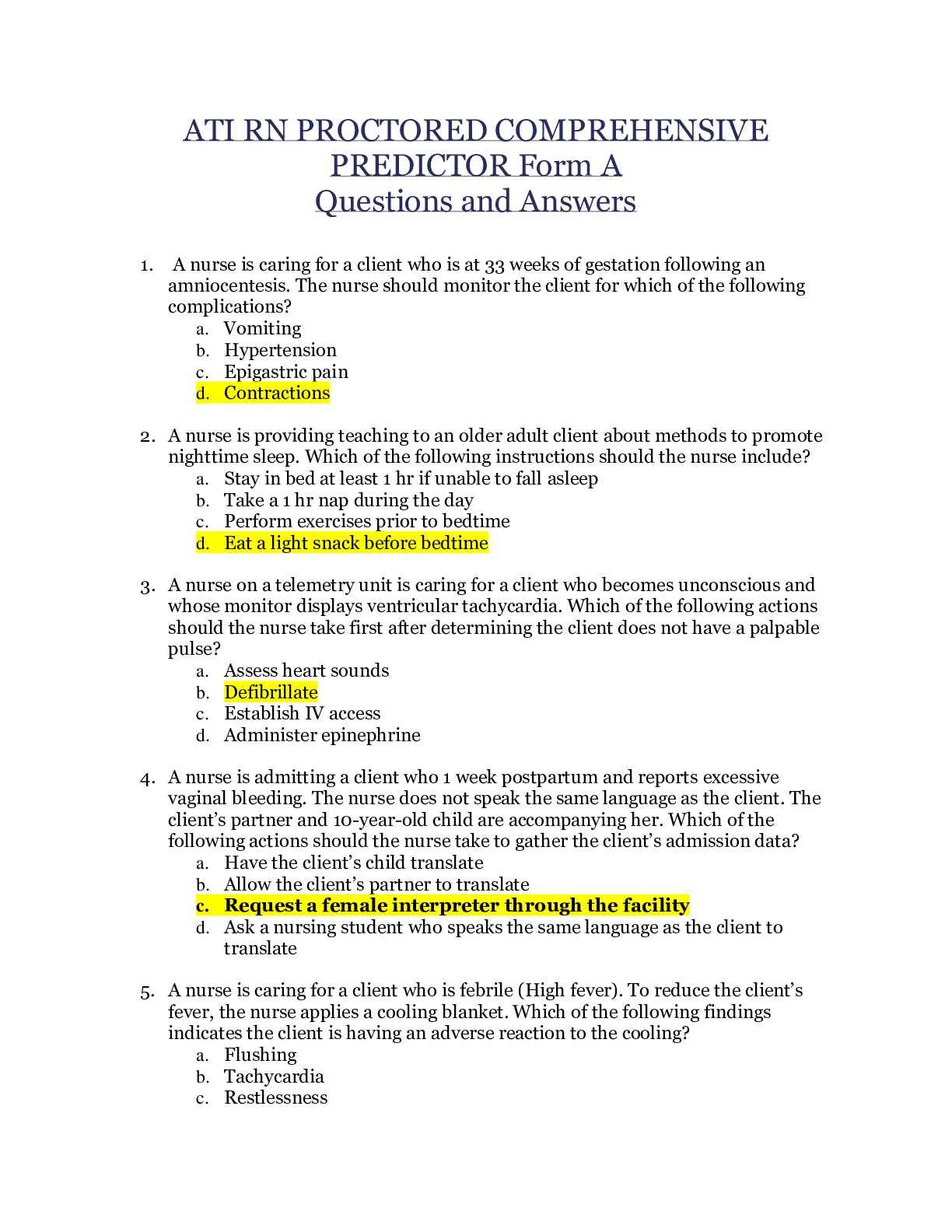
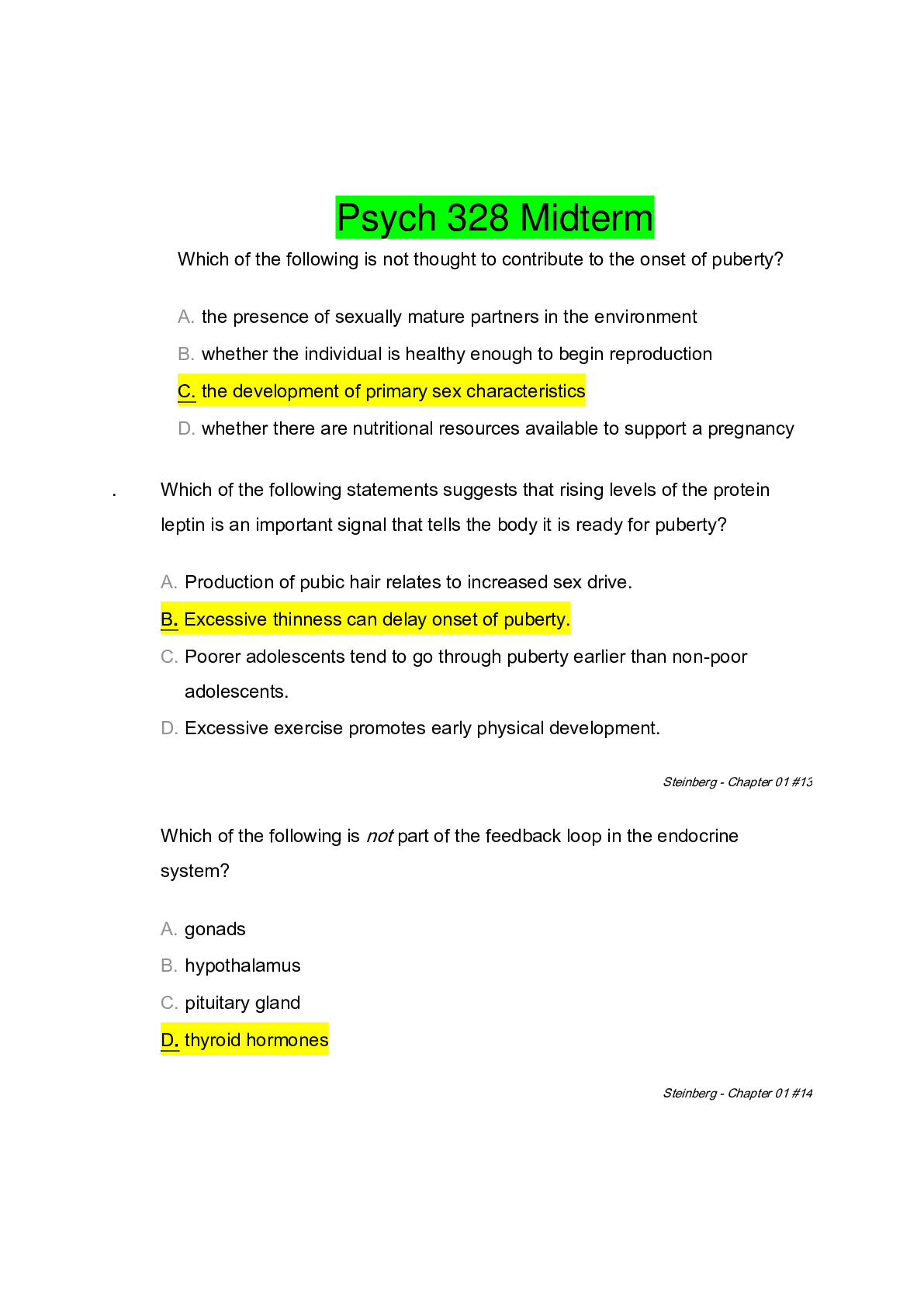



.png)

.png)

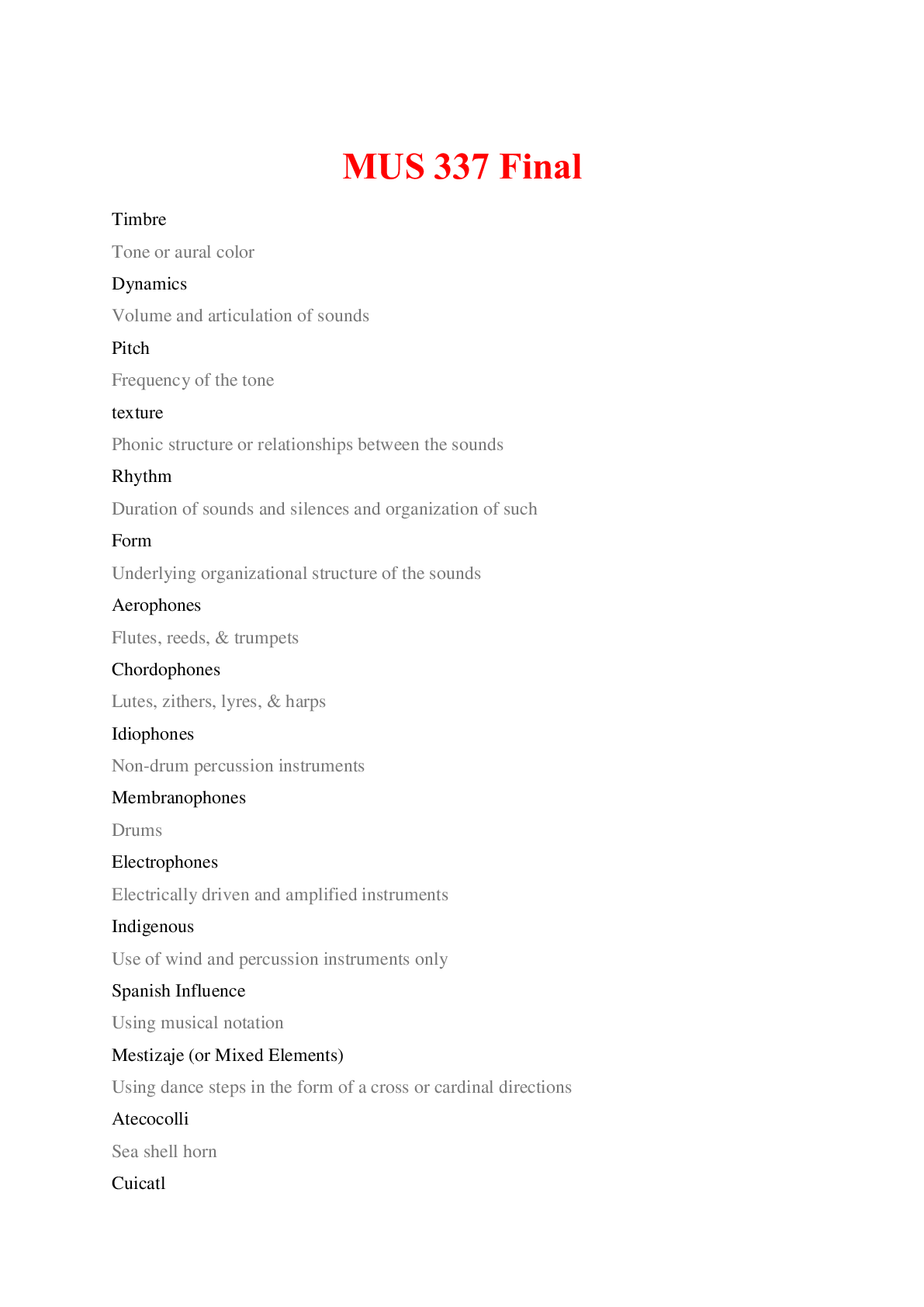

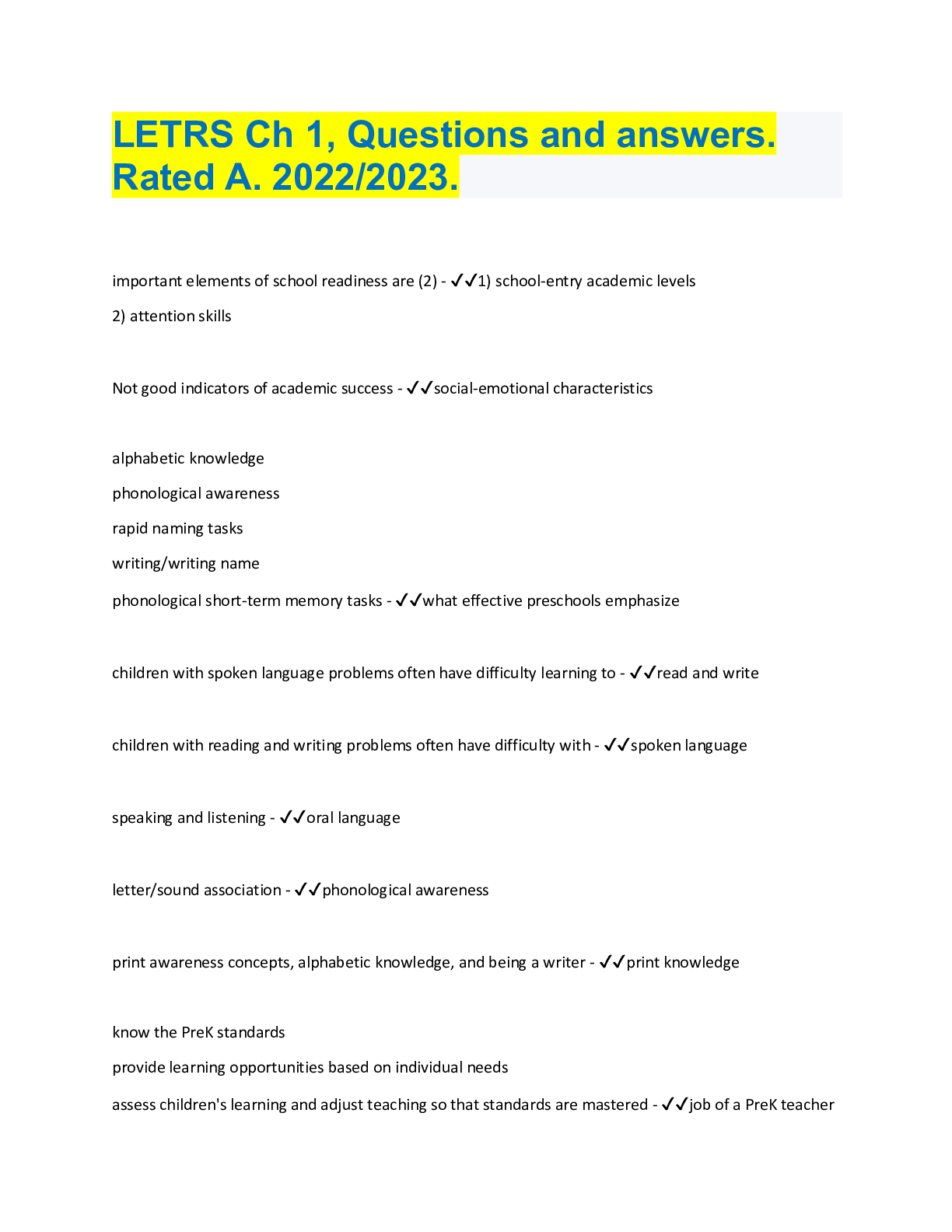
.png)
.png)

.png)
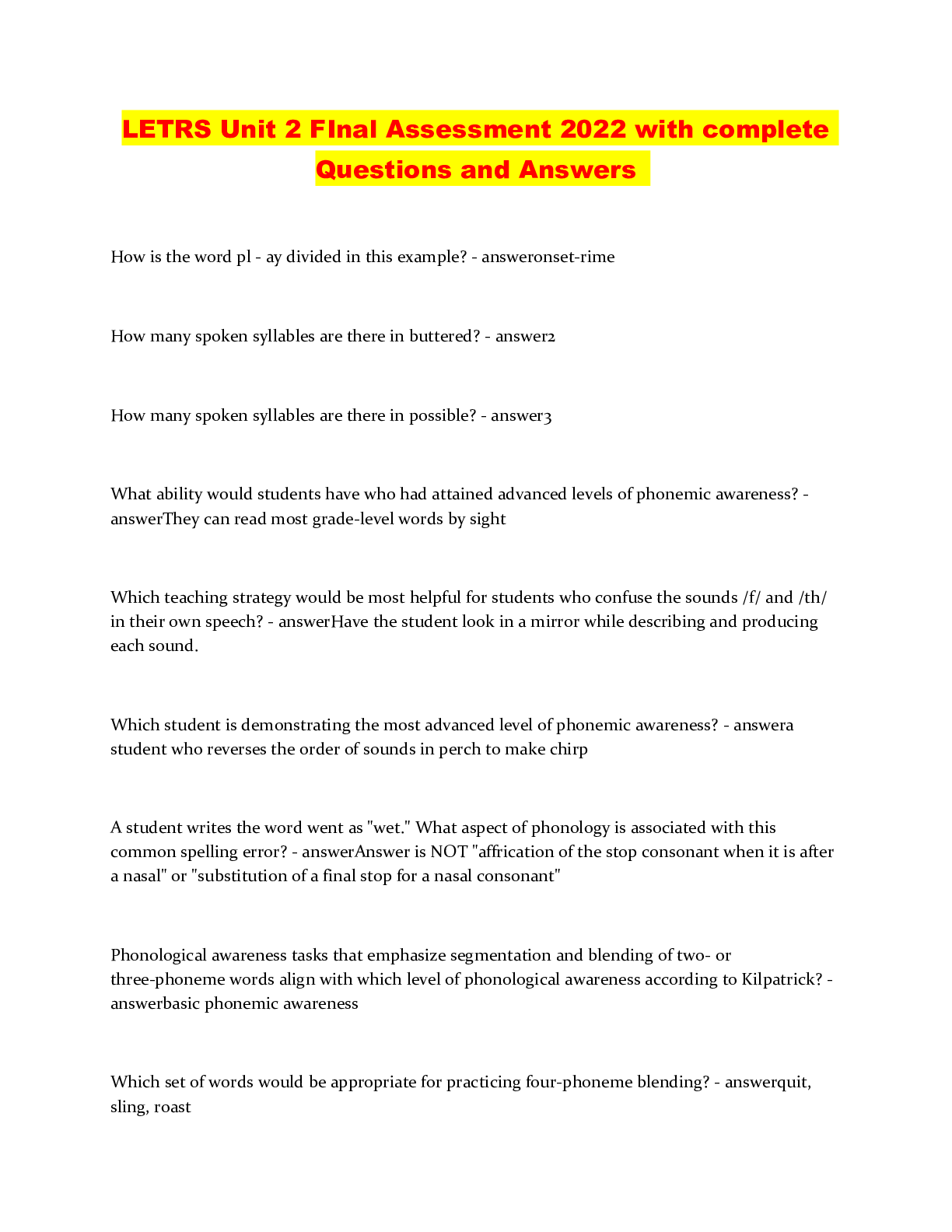



.png)
.png)

